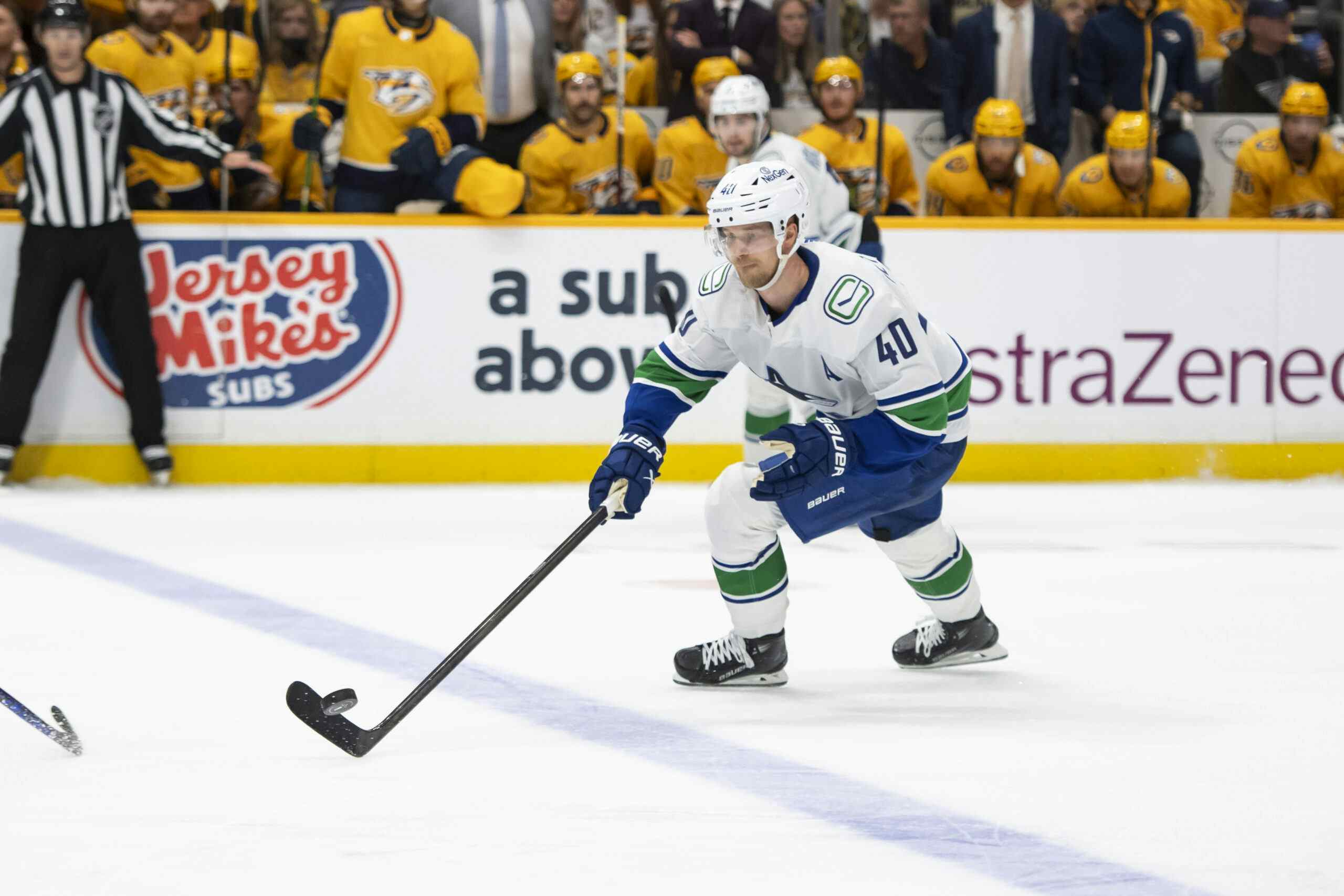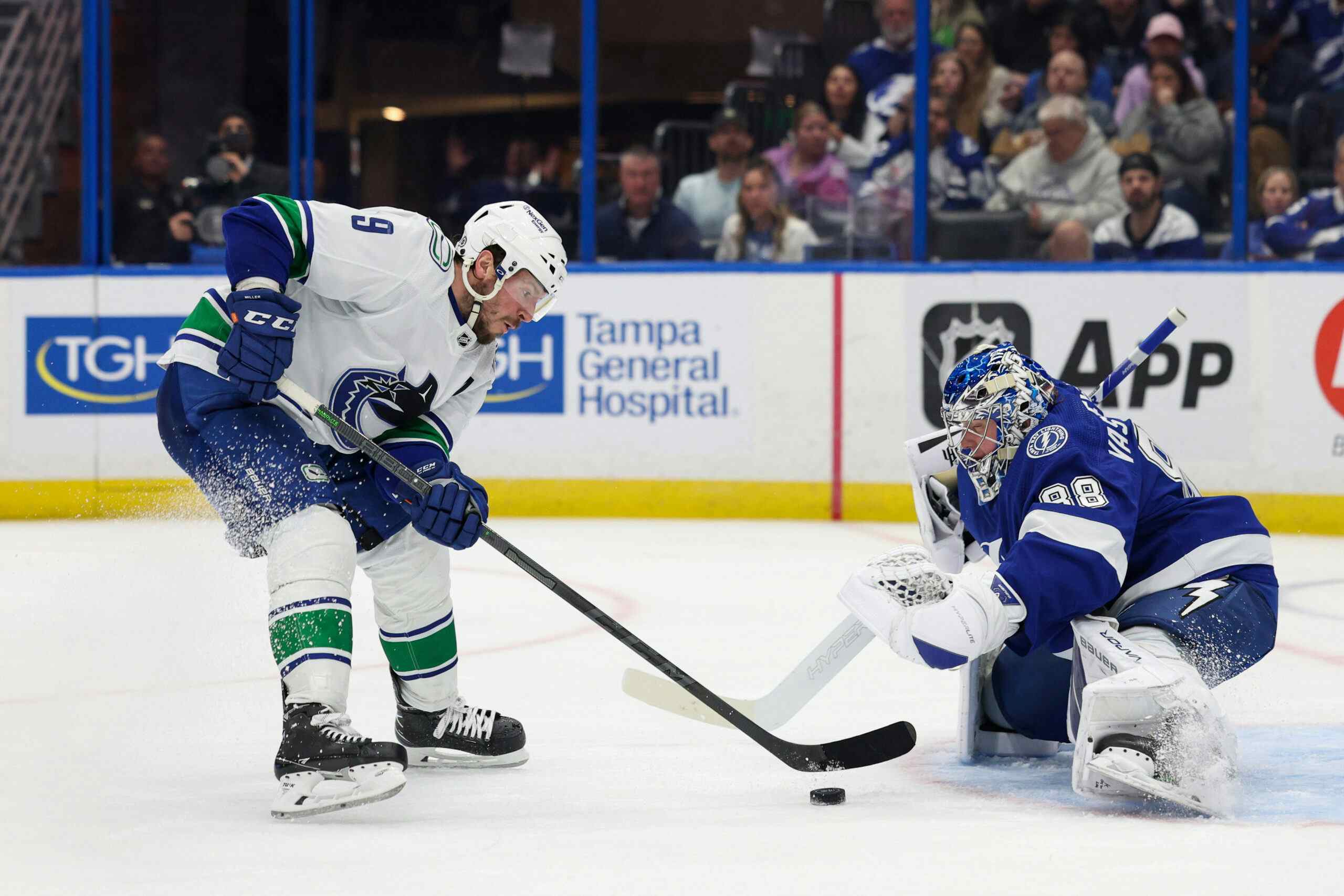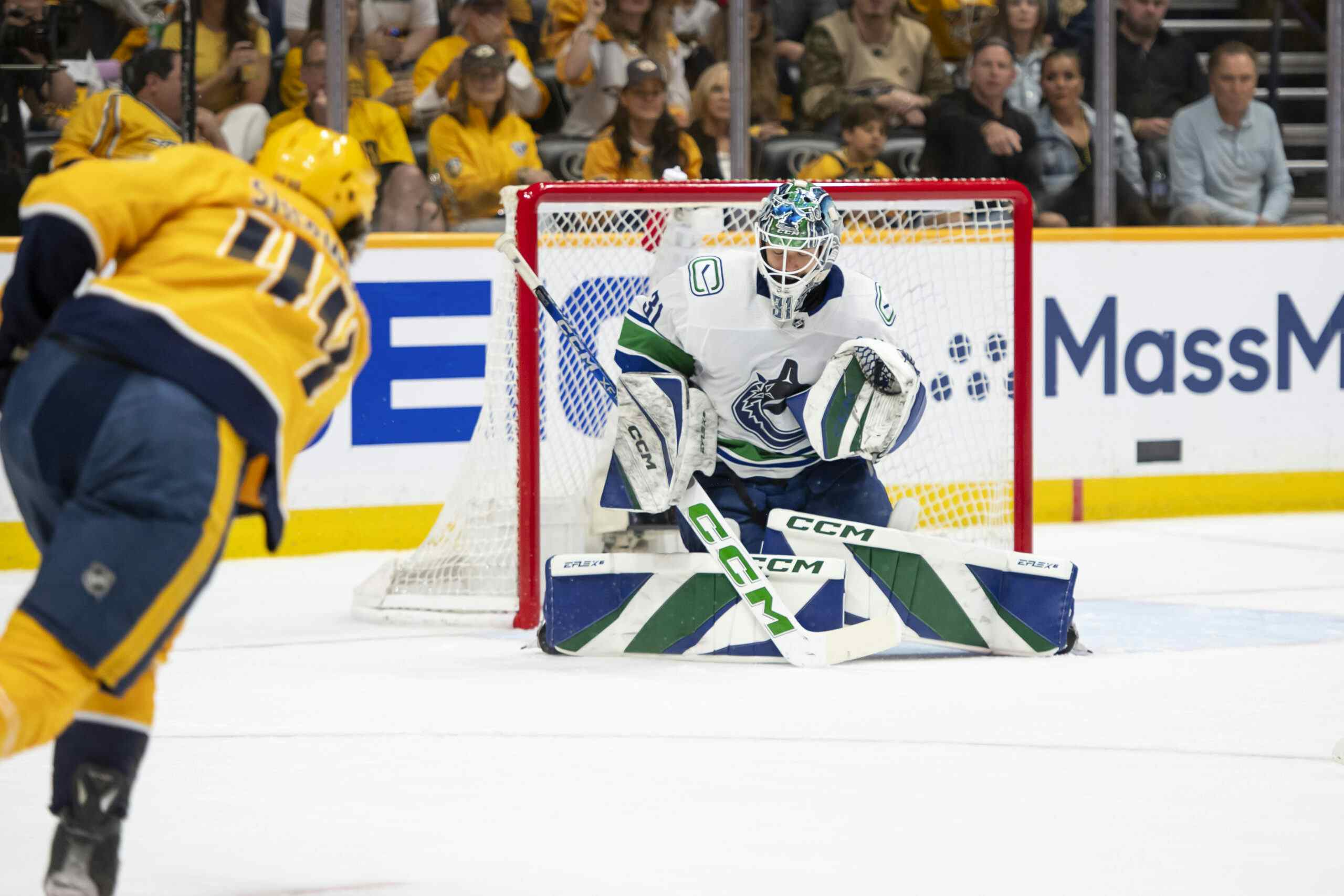The case for Roberto Luongo as the Canucks’ starter in 2013
By Cam Charron
11 years ago
Where’s the harm in having both Roberto Luongo and Cory Schneider on the roster this year? You may be significantly lowering one’s trading value by reducing them to backup status, but right now the Vancouver Canucks have all kinds of cap space, and play in a schedule where having two goalies is important. Run through HFBoards or any other corner of the Internet where a lot of hockey fans congregate and you’ll see people proposing trades for Luongo for pennies on the dollar under the impression the Canucks are in a hurry to trade Luongo. Why?
“You clearly approach the season differently on a tightened schedule,” Penguins coach Dan Bylsma said. “Games are closer together. We have a lot of games every other day. We have stretches where we go four in six, and six in eight, and seven in 10. So, there’s a lot of hockey games, and I think you’re going to see the goalies be used more, not so much based on who we play as on each goalie’s going to get their share of games, their number of games. Marc-Andre Fleury will play a majority of the games, but in the last 48-game season, we saw the teams that had success, we saw their two goaltenders, one played in the 35-game range and the backup played in the 18-to-20 range. It’s a lot of games in a 48-game season, 20 is, but that’s managing the schedule and managing the playing time.”
The Canucks are going to play several games on a short turnaround. Vancouver will play only seven back-to-backs, however, according to McKeens, and just nine stretches of three games in four nights. Realistically, the Canucks were handed a schedule by the league who had the full intention of apologizing for the “Roberto Luongo rule”. In the month of March, the Canucks play just three back-to-back games and just a single stretch of two days without a game.
I’m not one for cliché, but my analysis of certain goaltenders is that they tend to fare better on a day’s rest rather than more. Well, the one goalie being Roberto Luongo, since Cory Schneider doesn’t have the huge body of work. Here is Luongo since the 2008-2009 season, including playoffs, playing on one day’s rest versus all other games:
| GP | Win% | GAA | GP/SO | SV% | |
|---|---|---|---|---|---|
| One Day’s Rest | 144 | 0.590 | 2.40 | 8.5 | 0.921 |
| All Others | 142 | 0.592 | 2.46 | 14.0 | 0.915 |
There are some very noticeable things about this. One is that the team doesn’t fare much worse, they actually win more, but Luongo has a lower save percentage and a lower shutout rate when he isn’t playing in that rhythm. Here’s another interesting bit about the 286 games Luongo has played in the last four years:
| GP | Win% | GAA | GP/SO | SV% | |
|---|---|---|---|---|---|
| 0-40 Games | 160 | 0.600 | 2.32 | 12.3 | 0.921 |
| 40+ Games | 126 | 0.579 | 2.56 | 9.0 | 0.914 |
| 50+ Games | 90 | 0.589 | 2.59 | 8.2 | 0.913 |
| 60+ Games | 52 | 0.519 | 2.90 | 10.4 | 0.905 |
| 70+ Games | 27 | 0.556 | 2.99 | 13.5 | 0.903 |
When Luongo melted down in the 2011 Stanley Cup during Games 3, 4 and 6, he was playing games 81, 82, and 84 on the season. There’s not a lot to go on, but there’s some evidence that Luongo gets slightly more erratic if he plays 50 or more games. He actually gets a lot more shutouts in the 60+ games stage of the season than below 40, but his save percentage is way worse. In fact, Canucks Army has a statistic for that, called “blow ups”. I’m out of practice, but I recall that being a game where a goalie posts a save percentage of .849 or worse, or allows 5 goals without facing 40 shots. They’re used in contrast to “quality starts”, which is a game with a save percentage of .917 or better or an .885 while allowing two goals or fewer.
Anyway, take a look at how Luongo fares later in the season:
| Quality Start % | Blown Up % | |
|---|---|---|
| 0-40 Games | 61.3 | 10.6 |
| 40+ Games | 57.9 | 20.6 |
| 50+ Games | 57.8 | 24.4 |
| 60+ Games | 51.9 | 26.9 |
| 70+ Games | 48.1 | 33.3 |
Bear in mind that Luongo actually played very well in the Western Conference Final series against San Jose and in Games 1, 2 and 5 against Boston. Two of the best games of his career, Game 5 against both the Sharks and the Bruins, are in that 70+ game stretch. The thing is that he gets more erratic the more games he plays. This is definitely worth further study, but applied to Luongo, it doesn’t take a mathematician to spot the trend. Luongo’s good games tend to come when he has yet to play 40 games. He’s still a very good goaltender from the 50-60 range, but unpredictable from higher up.
There’s a reason I haven’t done this for Schneider. In his career, he’s played in consecutive nights just twice and has never played more than 36 games in a single season. He has at the AHL level, once, but keep in mind he came from the U.S. College system rather than the Canadian junior system. The major difference between those development systems is that the CHL plays on a pro schedule. They play 68 times a year in the QMJHL, and somewhere in the 40 range in the NCAA.
In a shortened season, it makes all the more sense to keep Luongo going, and hope Schneider is content with playing less than occasionally. It’s clear that you can’t have Luongo in the driver’s seat for a full 82-game season anymore without a capable goaltender riding shotgun, but I also think it’s clear that you can’t hand over the keys to Schneider before learning more about the effects of fatigue on goaltender performance.
The importance of having two goaltenders is understated. In the event the Canucks rid themselves of one, they’ll be without a capable backup which kills you in the 82-game season. In the 48-game season, the schedule is tailored for Luongo’s strengths, or the way he’s been trending over his last 286 games of action. Is that enough of a sample size to make the decision to keep Luongo for an extra season? My take is yes, and, if he’s starting again, it again drives up the price. There’s no reason right now for the Canucks to move Luongo, as Mike Gillis said, for “any reason other than to improve this hockey club”.
Recent articles from Cam Charron





